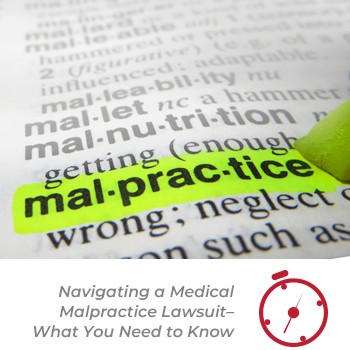
In my years as a medical malpractice attorney, no two of my cases have ever been exactly alike due to the variety of claims involved. Medical malpractice claims can be taken against providers, hospitals and other health care facilities, or to seek compensation for wrongful death, wrongful birth, or wrongful life. More often than not, they involve a complex combination of these actions.
Negligence by Health Care Providers
Many medical malpractice claims involve the negligence of health care providers, including physicians and nurses. Doctors or other hands-on providers may be negligent if they did not meet the standard of care for the procedure in question. This may include:
- Failing to provide the care required,
- Or giving care that is inappropriate for the medical condition.
Nurses may also be found negligent in a medical malpractice case. They are expected to act as advocates for their patients. If nurses observe medical errors or doctors providing unsafe care, they have the duty to alert doctors and run their concerns up the chain of command until appropriate action is taken. Failing to do so–even inadvertently–is considered negligence.
If you have been injured by a medical error, contact a leading personal injury lawyer today for a free consultation.
Negligence by Health Care Facilities
There are many reasons why a hospital, urgent care center, or other health care facility may be found negligent, including failure to:
- Staff and supervise a facility properly,
- Train staff members adequately, and
- Put policies and procedures in place that ensure patient safety and see that they are followed.
In 2014 I filed a suit for a client who alleged her doctors’ failure to diagnose her uterine infection led to the amputation of her arms and legs. The ER staff sent her home three separate times, despite the client being in extreme pain.
Other Medical Malpractice Claims
Injured patients and their families may be able to seek fair compensation for other medical malpractice claims. For instance, patients may seek damages if they:
- Were not given the option to exercise their right to give informed consent. Doctors must thoroughly inform patients about medical procedures before performing them. If not, patients can seek damages for any serious harm that results.
- Were victims of beatings, fraud, or invasions of privacy at the hands of health care providers or facilities.
- Experienced a wrongful birth. This claim may be filed if a child is born with a severe birth defect that should have been detected before the deadline to legally terminate the pregnancy has passed. In some states, wrongful life claims may be brought on the child’s behalf for damages the child accrues for pain and suffering over his or her lifetime.
Death Caused by Medical Errors
Wrongful death claims may be filed when victims die as a result of malpractice. Though state law varies, a patient’s immediate family can pursue a wrongful death claim on behalf of a loved one. They may do so in conjunction with a survivor action, which allows the estate of the deceased patient to continue to pursue an unresolved medical malpractice claim.
Medical malpractice suits are complex and often involve many different kinds of claims. Always seek the advice of a reputable presonal injury attorney if you suspect a medical error or negligence contributed to your serious injury.
Also in this section of Howard Janet’s book:
- When spouse can join the claims
- Nurses as patient advocates and the ‘chain of command’
- Survivor actions
You can purchase a copy of Navigating a Medical Malpractice Lawsuit–What You Need to Know from Amazon.
RELATED POSTS
Our Lawyers Don’t Stop Fighting for Your Medical Malpractice Settlement Until Justice Is Served
